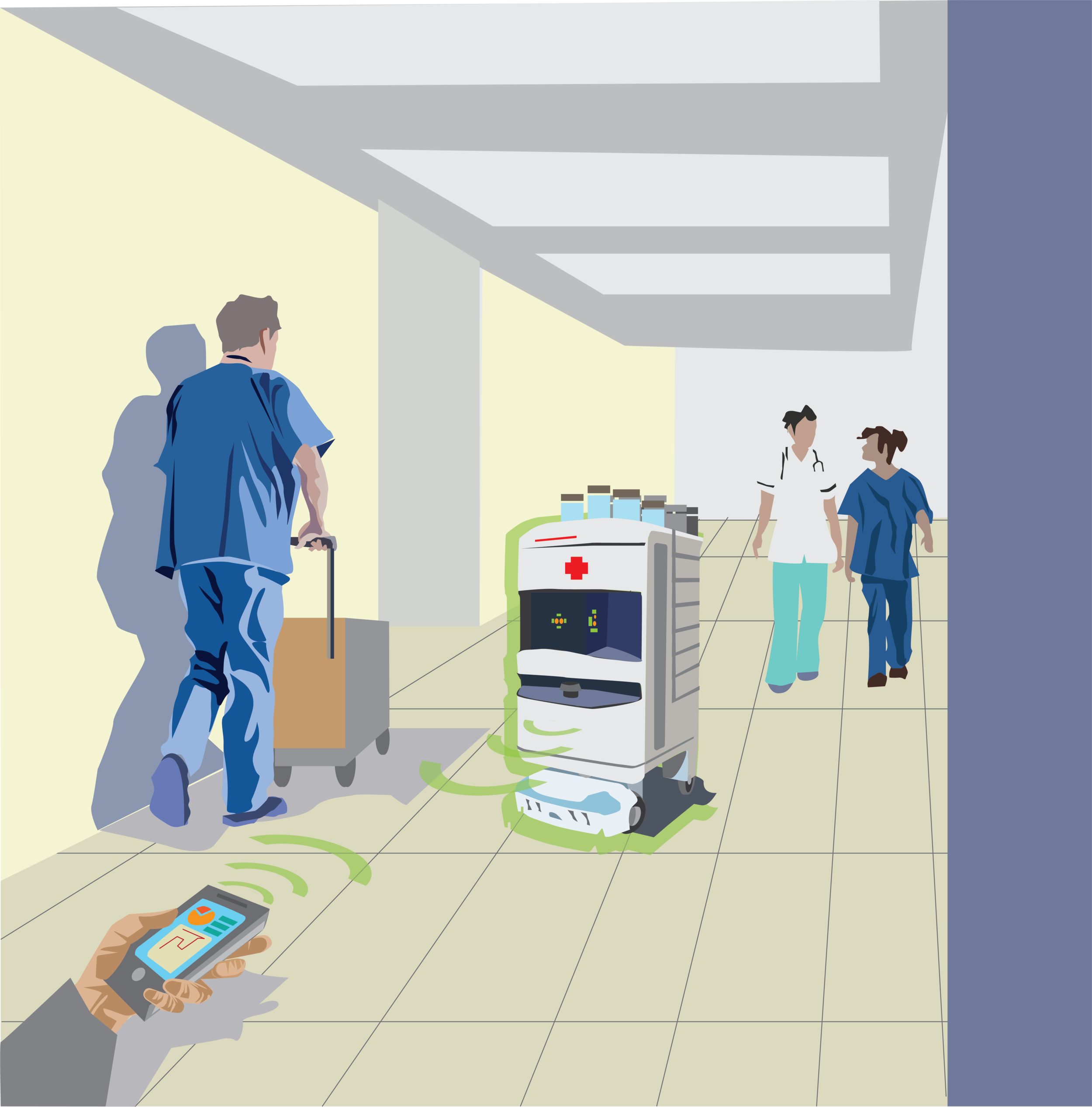Hospitals of the future
A brief review of the benefits and challenges of future-proof healthcare.
Jad McDonald, Associate
Hospitals of the future will change the face of medicine by challenging old methodologies, reimagining new clinical processes, and leveraging new technologies. Supported by an underlying digitized network infrastructure of interconnected assets, future healthcare facilities will achieve better patient care, experience, and operational efficiencies in a safer environment.
As electrical engineers, our clients rely on our expertise for a wide array of subjects ranging from lighting and controls, to bringing full interoperability to divergent networks, and being able to decipher the growing number of acronyms of seemingly futuristic concepts such as Internet of Things (IoT), PoE, VLAN and IMIT!
We’re now only a few generations away from the years imagined in the popular cartoon ‘The Jetsons’ and ideas of what ‘future-ready’ or ‘smart’ might mean by then are gaining traction. Patients envision a building that will be truly interactive and personalized in many ways, such as auto mapping their way to their destination within the building, allowing access to self-diagnostic kiosks, and ensuring their patient information follows them throughout the building. The reality is we are closer than ever to making all this possible!
Driving Efficiency with Maintenance Optimization
From a maintenance perspective, tomorrow’s hospitals will be smart and cost-efficient. Smart maintenance platforms will self-test, diagnose, order needed parts, and deliver a detailed report before any human intervention is required. Emerging technologies will be embedded into devices. The IoT will use Bluetooth or similar wireless technologies to provide a wealth of data that can be used to redesign spaces more efficiently (LEAN) or provide asset tracking for costly equipment. The Cortellucci Vaughan Hospital in Ontario, Canada is proving that these technologies are possible, affordable, and work as expected.
Impacts of Virtual Care for Patients, Family, and Staff
Another facet of future patient care is virtual care, a centralized approach that uses technology to streamline, enhance, and improve patient experience and care both in and out of the hospital. Virtual care allows staff to attend to more patients by utilizing a ‘Command Center’ full of monitors that allow observation of the hospital’s patients. Additionally, a ‘virtual triage’ is used to quickly prioritize incoming patients via online interview and advise patients who do not need hospital care to return home. The Humber Hospital in Ontario has implemented Canada’s first Hospital Command Center, a virtual care model with a good deal of success paving the way for other Health Authorities to replicate their processes.
A critical aspect of virtual care is to provide patients with a smoother and faster experience. Virtual care will reduce in-hospital visits and time spent in hospital, allow patients to make their own appointments, and support receiving care from home via telehealth. Virtual doctor consults will also assist operating doctors in identifying issues and enable expertise to be shared in real-time when complications arise.
“As technology evolves, it is within our power to capture its benefits for more patient-centric, efficient, and sustainable healthcare processes.”
In-hospital patients will benefit from digital tracking of their whereabouts and information throughout the hospital in an effort to reduce errors and increase patient service. Even the visitor experience will benefit as family and friends will be able to see where a patient is located in real-time and access a mapped route directly on their smart phone. As technology continuously evolves over the next 10 to 20 years, we will see the implementation of ‘smart beds’ which greatly enhance patient care using advanced artificial intelligence to predict health risks and provide faster responses. Back of house hospitals will be full of automated guided vehicles (AGV) moving supplies to staff and auto restocking supplies, while operating rooms will be partially or completely robotic, increasing surgical precision and reducing errors.
Sustainable Healthcare for the Future
Along with being cost-efficient and technology-driven, the hospitals of the future will also be sustainable. Micro grids will produce power to allow for all-electric hospitals that can achieve net zero energy and zero carbon.
Furthermore, to address anticipated climate changes due to global warming, hospitals are looking to address threats such as higher flood planes, hotter ambient and peak temperatures, population growth, and more frequent disease outbreaks. Some design modifications needed to address these concerns are segmenting out-break zones to contain disease while treating infected patients, developing an Emergency Operations Center capable of handling the intense administrative needs of a large-scale emergency, and utilizing emerging technologies such as ultraviolet (UV) lighting in general use luminaires that are safe for occupants but greatly reduce hospital-acquired infections (HAI).
Identifying Barriers to Change
Of course, these revolutionary changes will not be without challenges. Facility maintenance operators may struggle to keep up to date on the newest digital platforms, learn complex systems that vary from site to site, and retain long-term staff. Even clinical staff can find it daunting to effectively leverage the various tools available in any given system. Dedicated and highly trained IT staff are needed to manage implementations, maintain systems, and provide user training. Hospitals must be prepared to ask where will this skilled workforce come from and who will foot the bill for their salaries?
Another key challenge is ensuring these systems function correctly in the first place. Commissioning a complex series of interwoven systems, often for the first time, is a daunting task that many contractors cannot accomplish. Many forces squeeze commissioning at the end of a project with no remaining budget left, no time left in the schedule, and a lack of skilled IT people capable of understanding and commissioning these systems correctly.
It is evident the hospitals of the future will be fundamental in improving patient care, outcomes, and experience. As technology evolves, it is within our power to capture its benefits for more patient-centric, efficient, and sustainable healthcare processes. While the challenges of adapting and transforming outdated hospital facilities may seem obvious and daunting, proper preparation and a team of electrical engineering experts can aid hospitals around the world to enter a new stage of modernized healthcare.



